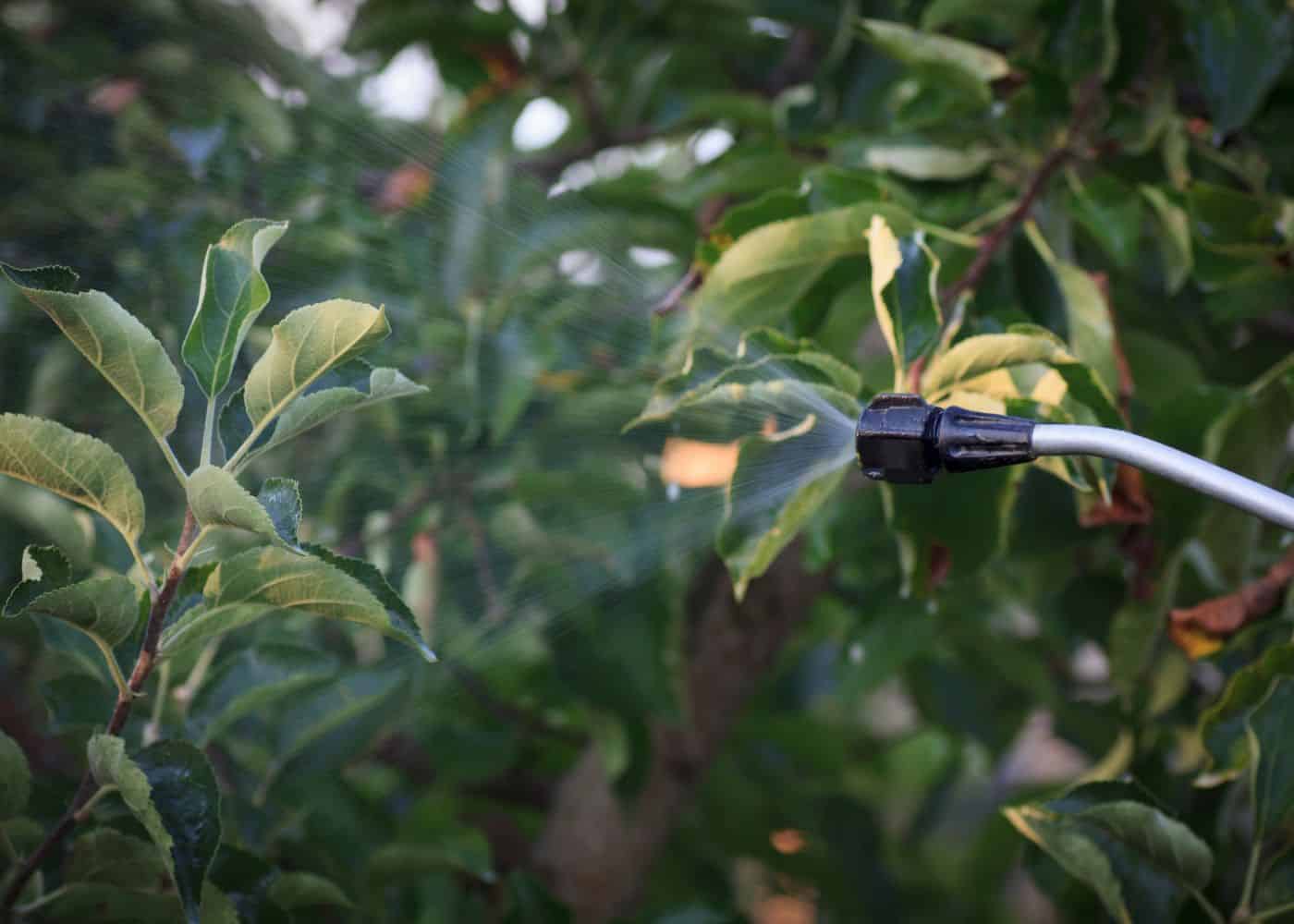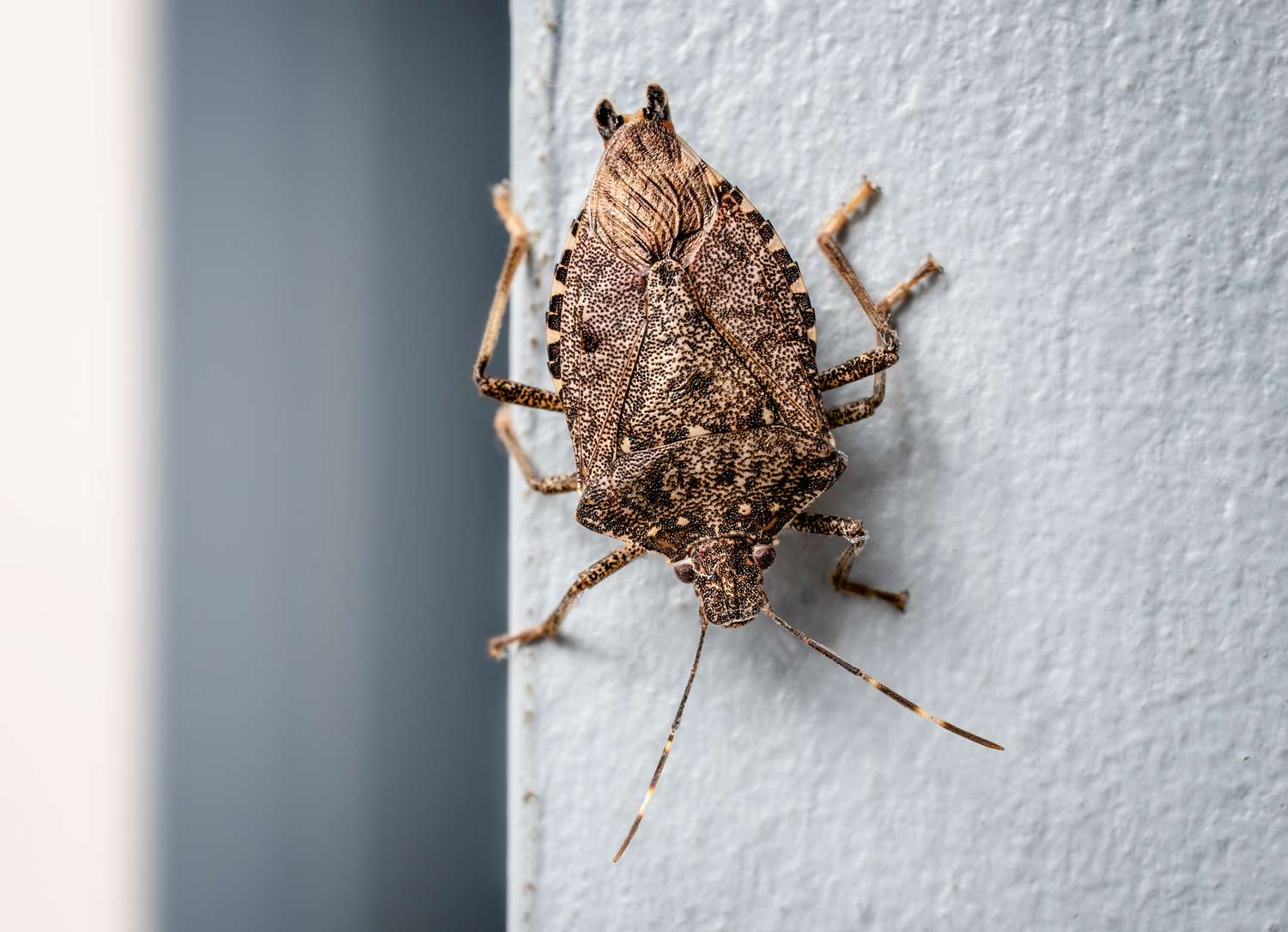Home>Gardening Basics>Getting Started>When To Spray For Weeds


Getting Started
When To Spray For Weeds
Published: December 15, 2023
Learn when to spray for weeds and get started on your weed control plan. Find out the best timing and methods for effective weed management.
(Many of the links in this article redirect to a specific reviewed product. Your purchase of these products through affiliate links helps to generate commission for Chicagolandgardening.com, at no extra cost. Learn more)
Table of Contents
Introduction
Understanding the Importance of Weed Control
Weeds are a common nuisance for many gardeners and homeowners. They can quickly invade and take over a once pristine lawn or garden, detracting from its beauty and causing frustration for those trying to maintain a well-manicured outdoor space. In the battle against these unwelcome plants, knowing when to spray for weeds is crucial for effective control.
Weed control is a vital aspect of lawn and garden maintenance, as unchecked weed growth can compete with desirable plants for water, sunlight, and nutrients. Additionally, some weeds can be invasive and spread rapidly, posing a threat to the biodiversity of an area. Therefore, understanding the best strategies for weed control, including the optimal timing for weed spraying, is essential for preserving the health and aesthetics of outdoor spaces.
Effective weed control not only enhances the visual appeal of a garden or lawn but also promotes the overall well-being of the plants within that space. By addressing weed growth proactively, gardeners can create an environment where their desired plants can thrive without the threat of being overshadowed or choked out by invasive weeds.
In this comprehensive guide, we will delve into the intricacies of weed growth, the factors to consider before spraying for weeds, the best time to apply weed control measures, and the various methods available for combating weed infestations. By the end of this article, you will have a deeper understanding of the importance of weed control and the optimal techniques for managing and preventing weed growth.
Understanding Weed Growth
Before delving into the specifics of weed control, it’s essential to grasp the fundamental aspects of weed growth. Weeds are typically characterized as unwanted plants that grow vigorously and often outcompete desirable plants in a given area. Understanding the mechanisms behind weed proliferation can aid in developing effective strategies to manage and eradicate them.
Weed seeds can remain dormant in the soil for extended periods, awaiting the ideal conditions for germination. Factors such as soil moisture, temperature, and sunlight play pivotal roles in triggering the germination process. Once germinated, weeds rapidly establish their root systems and foliage, leveraging their ability to absorb nutrients and water from the soil to fuel their growth.
Furthermore, the reproductive capacity of weeds is a key factor contributing to their prolific spread. Many weed species produce copious amounts of seeds, ensuring their survival and proliferation. These seeds can be dispersed through various means, including wind, animals, and human activity, allowing weeds to colonize new areas and perpetuate their growth cycle.
Understanding the life cycle and growth habits of prevalent weed species in a specific region is crucial for implementing targeted control measures. By gaining insights into the germination patterns, growth rates, and reproductive strategies of common weeds, individuals can tailor their weed control efforts for maximum effectiveness.
It’s important to note that different weed species exhibit varying growth characteristics, making it necessary to identify the specific weeds present in a given area before formulating a control plan. By comprehending the intricacies of weed growth, individuals can adopt proactive measures to prevent weed establishment and proliferation, ultimately preserving the health and aesthetics of their outdoor spaces.
Factors to Consider Before Spraying for Weeds
Before embarking on a weed control regimen, it is essential to consider several factors that can influence the effectiveness of weed spraying. By carefully evaluating these elements, individuals can optimize their weed control efforts and minimize the potential for adverse impacts on the surrounding environment.
- Weather Conditions: The prevailing weather conditions play a pivotal role in determining the suitability of spraying for weeds. Ideally, it is best to undertake weed control activities during calm, dry weather to prevent herbicide drift and ensure optimal absorption by the target weeds.
- Weed Species: Understanding the specific weed species infesting an area is crucial for selecting the most appropriate herbicide and application method. Different weeds may exhibit varying susceptibilities to particular herbicidal formulations, necessitating a tailored approach for effective control.
- Surrounding Vegetation: Careful consideration should be given to the presence of desirable plants in the vicinity of the targeted weed-infested area. Selective herbicides or precise application techniques may be warranted to avoid harming non-target vegetation.
- Growth Stage of Weeds: The growth stage of the weeds influences the efficacy of herbicidal treatments. Certain herbicides are most effective when applied to weeds at specific developmental stages, and timing the spraying accordingly can enhance control outcomes.
- Regulatory Guidelines: Adhering to local regulations and guidelines pertaining to herbicide use is imperative. It is essential to be aware of any restrictions on herbicide application, particularly in residential or environmentally sensitive areas.
By taking these factors into account, individuals can make informed decisions regarding the timing, method, and choice of herbicidal products for weed control. This thoughtful approach not only maximizes the effectiveness of weed spraying but also minimizes the potential risks associated with herbicide application, contributing to a more sustainable and environmentally conscious weed management strategy.
Best Time to Spray for Weeds
Identifying the optimal timing for weed spraying is crucial for achieving effective control and minimizing the resurgence of unwanted vegetation. The best time to apply herbicidal treatments for weeds is influenced by various factors, including the life cycle of the target weeds, prevailing weather conditions, and the specific herbicidal products being used.
Early spring is often considered an opportune period for initiating weed control measures, as many weed species begin active growth during this time. Applying herbicides during this phase can effectively target emerging weeds, preventing them from establishing a strong foothold and competing with desirable plants for resources.
Additionally, targeting weeds during their active growth stages, such as when they are actively flowering or developing seed heads, can yield favorable results. At these growth stages, weeds are more susceptible to herbicidal treatments, increasing the likelihood of successful control and reducing the potential for seed production and further proliferation.
It is important to consider the weather conditions when determining the best time to spray for weeds. Ideally, herbicidal applications should be carried out during calm, dry weather to minimize herbicide drift and ensure optimal adherence to target weeds. Avoiding periods of rainfall or excessive humidity is advisable, as these conditions can impede the effectiveness of herbicidal treatments.
For perennial weeds, timing herbicide applications during their peak growth periods, typically in late spring or early summer, can enhance control outcomes by targeting the plants when they are actively utilizing resources and are more receptive to herbicidal uptake.
Furthermore, considering the specific herbicidal products being used is essential for determining the best time to spray for weeds. Some herbicides are formulated to target weeds at particular growth stages, necessitating precise timing for optimal efficacy. Understanding the recommended application timings and growth stage preferences of herbicidal products is integral to achieving successful weed control.
By aligning herbicidal treatments with the growth stages of target weeds and selecting appropriate timing based on weather conditions and herbicide characteristics, individuals can maximize the effectiveness of their weed control efforts, promoting the long-term health and vitality of their outdoor spaces.
Types of Weed Control Methods
When addressing weed infestations, employing a diverse array of weed control methods can contribute to comprehensive and sustainable management. From cultural practices to chemical interventions, various approaches are available to combat weeds effectively. Understanding the different types of weed control methods is essential for devising a holistic strategy tailored to specific weed infestations.
- Cultural Control: Cultural practices, such as mulching, proper irrigation, and regular mowing, can help suppress weed growth by creating unfavorable conditions for weed establishment and proliferation. Additionally, promoting the health and vigor of desirable plants through proper cultural practices can enhance their competitiveness against weeds.
- Mechanical Control: Mechanical methods, including hand-pulling weeds, hoeing, and tilling, offer targeted and environmentally friendly approaches to weed management. These methods are particularly effective for removing individual weeds or addressing localized infestations without relying on chemical interventions.
- Biological Control: Utilizing natural enemies, such as herbivorous insects or pathogens specific to certain weed species, can help mitigate weed populations over time. Biological control methods aim to harness the natural regulatory mechanisms present in ecosystems to suppress weed growth without the use of synthetic chemicals.
- Chemical Control: Herbicidal treatments are a common method for controlling weeds, offering targeted and efficient means of managing widespread infestations. Selective herbicides can be employed to specifically target weed species while minimizing impacts on non-target vegetation, while non-selective herbicides provide broad-spectrum control for clearing areas of unwanted vegetation.
- Preventive Control: Implementing preventive measures, such as the use of pre-emergent herbicides or landscape fabric, can impede the germination and establishment of weed seeds, reducing the need for subsequent weed control efforts. Preventive control methods focus on disrupting the weed life cycle before infestations become established.
Integrating a combination of these weed control methods, tailored to the specific characteristics of the weed infestation and the surrounding environment, can yield effective and sustainable results. By adopting a multifaceted approach that considers cultural, mechanical, biological, chemical, and preventive control strategies, individuals can develop a well-rounded weed management plan that promotes the long-term health and resilience of their outdoor spaces.
Conclusion
Effective weed control is a fundamental aspect of maintaining the health, aesthetics, and functionality of outdoor spaces. By understanding the intricacies of weed growth, considering key factors before spraying for weeds, identifying the best timing for herbicidal treatments, and exploring diverse weed control methods, individuals can develop comprehensive strategies for managing and preventing weed infestations.
It is essential to approach weed control with a holistic mindset, integrating cultural, mechanical, biological, chemical, and preventive control methods to address weed infestations effectively. By leveraging a diverse array of weed control approaches, individuals can minimize the reliance on any single method and promote sustainable management practices that align with environmental stewardship principles.
Furthermore, the timing of weed spraying plays a pivotal role in achieving successful control outcomes. By targeting weeds during their vulnerable growth stages and considering weather conditions conducive to herbicidal application, individuals can optimize the efficacy of their weed control efforts while minimizing potential risks to non-target vegetation and the surrounding environment.
Ultimately, a well-informed and proactive approach to weed control can contribute to the creation of vibrant, healthy outdoor spaces where desired plants can thrive without the encroachment of invasive weeds. By integrating the knowledge and strategies outlined in this guide, individuals can embark on their weed control endeavors with confidence, fostering landscapes and gardens that are free from the constraints of unchecked weed growth.





